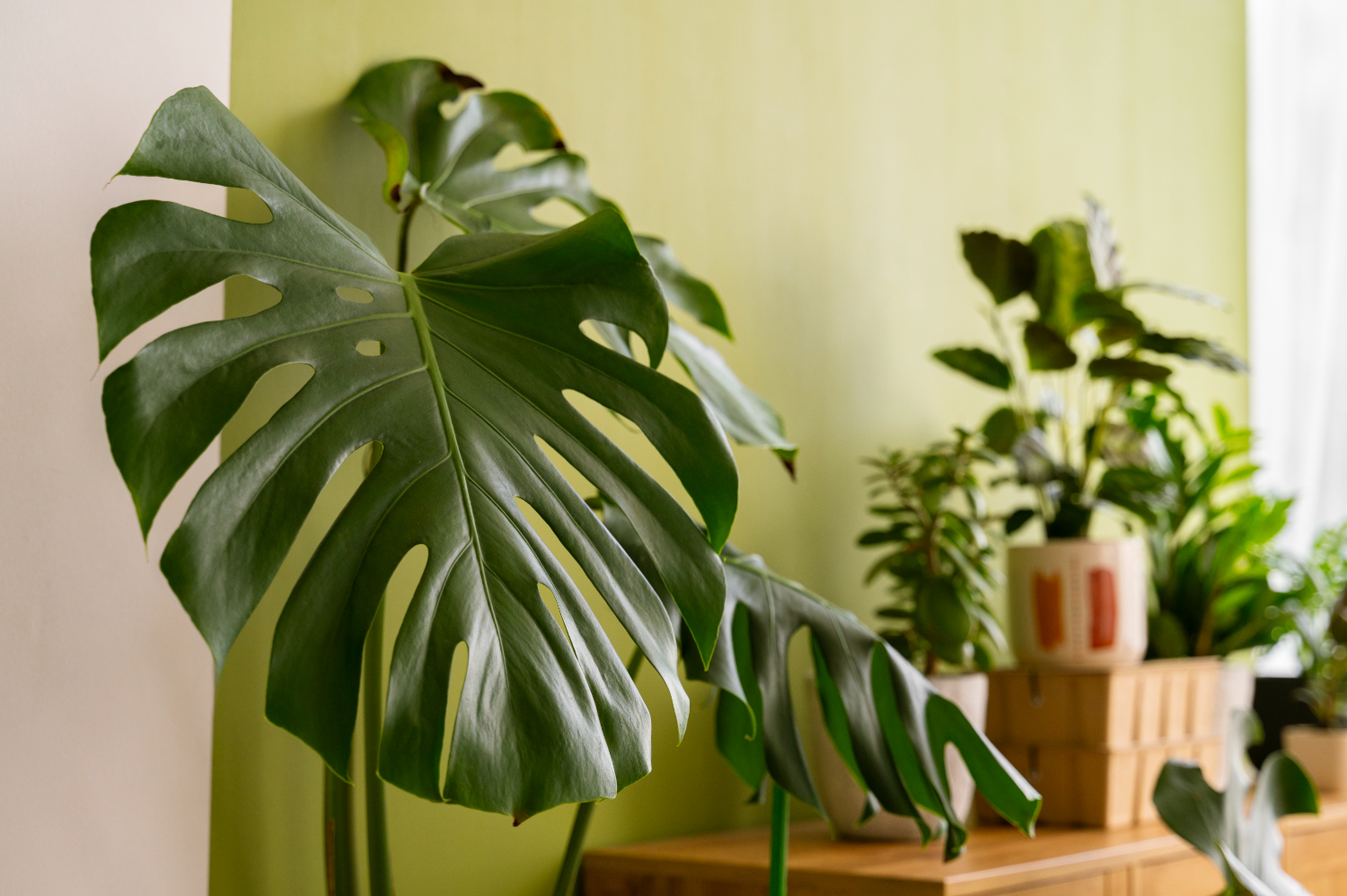Furnishing Rental Apartments: Creating a Home Away From Home
Houseplants are a great way to decorate a rental property …

Houseplants improve the health, calmness, and enjoyment of homes and workplaces. While they clean the air of dangerous pollutants and improve the quality of the environment, they also improve a space’s aesthetic and give a more vibrant, fresh feel. They help increase humidity, which helps avoid throat irritation and dry skin.
The Swiss cheese plant, also called Monstera deliciosa, is a popular houseplant loved by homeowners worldwide. Its large, shiny green leaves with natural holes make it unique and attractive. Growing large, it can transform a regular room into a vibrant space.
Gowcycle offers a complete growing and caring guide for the Swiss cheese plant. This lovely, low-maintenance plant is ideal for both new and seasoned plant owners.
The Central and South American rainforests are the native habitat of the Swiss cheese plant. It flourishes in warm, humid climates like Mexico, Panama, and Costa Rica. Monstera deliciosa climbs tall trees for sunlight and supports itself with its aerial roots in the wild.
Because it thrives in tropical conditions, the Swiss Cheese Plant loves warmth and moisture. It naturally grows under the shade of larger trees, preferring indirect sunlight rather than direct exposure to the sun.
The name “Swiss Cheese Plant” comes from the splits and holes that form in its leaves as it ages. The leaves have fenestrations, which are naturally occurring holes that give the plant a striking appearance and resemble Swiss cheese.
The plant also produces fruit in its natural habitat. When mature, the fruit looks like a green corn cob and can be eaten. It’s sweet taste is similar to a mix of pineapple and banana.
The Swiss cheese plant is a beautiful houseplant. Here are the key advantages of growing this plant in a home or office:
Its large, shiny, hole-filled leaves give the plant a unique and striking appearance. It adds a tropical, jungle-like feel to any indoor space, improving interior design. It is a statement plant in living rooms, offices, and bedrooms.
Like many indoor plants, it helps remove pollutants from the air. It takes in carbon dioxide and releases oxygen, improving air quality. It also reduces airborne contaminants like formaldehyde and benzene, common in furniture and household products.
The presence of greenery can improve mood, productivity, and focus. Keeping houseplants reduces stress and anxiety. Caring for a plant provides a sense of accomplishment, promoting mental relaxation.
The Swiss cheese plant releases moisture into the air through transpiration, helping reduce home dryness, especially during winter when heaters lower humidity levels. In addition to preventing dry eyes and throat irritation, increased humidity can improve skin and respiratory health.
Unlike many tropical plants, Swiss cheese plants require little care and are low-maintenance. They are perfect for beginners because they can adjust to various light levels. They are great plants for people with busy schedules because they survive some carelessness.
In some cultures, the Swiss cheese plant is regarded as a lucky charm and a sign of abundance. It is frequently presented as a gift for newly constructed homes or companies, signifying development and achievement.
Big leaves can reduce noise in indoor areas by absorbing sound. When noise levels are high in homes or offices, this plant can help.
When fully grown, this plant bears a green cone-shaped fruit called “ceriman.” It is safe to consume and tastes like a cross between a banana and a pineapple. However, oxalic acid present in large quantities in the unripe fruit can be harmful.
Swiss cheese plant requires little attention. Here is an easy-to-follow guide to taking care of this lovely plant:
Monstera plants require adequate lighting because it impacts their health. The ideal light for this plant is bright, indirect light, like the gentle sunlight that penetrates the leaves of a rainforest. It grows well when placed near a window that receives filtered sunlight.
For Monstera to remain healthy, it must be irrigated. It must not be watered again until the top inch or two of soil has dried. Watering once or twice a week is sufficient, depending on local temperature and humidity levels. Irrigate the soil when it feels dry.
Because it is native to a tropical region, the Swiss cheese plant prefers warm temperatures between 65–85°F and high humidity. Spray the leaves or use a humidifier in a dry climate.
A well-draining soil mix is ideal for this plant. Organic matter, such as compost and peat moss, can increase soil quality. In the spring and summer, nourish once every month for healthy growth.
To avoid root rot, use a pot with drainage holes. Plastic pots hold on to more moisture, whereas terracotta pots absorb more.
Keep the leaves clean, maintain proper humidity, and check for pests regularly. If needed, use neem oil or insecticidal soap.
Clean leaves with a wet cloth every few weeks to remove dust and keep them shiny. Avoid leaf shine sprays, as they can block pores.
The Swiss cheese plant is a beautiful, low-maintenance houseplant that adds beauty and greenery to any area. It is the ideal option for plant lovers because of its distinctive leaves, air-purifying properties, and ease of maintenance. If given the proper light, water, and humidity, homeowners can have a healthy, flourishing plant for many years. Visit Growcycle to get this beautiful plant and enjoy its freshness inside homes.